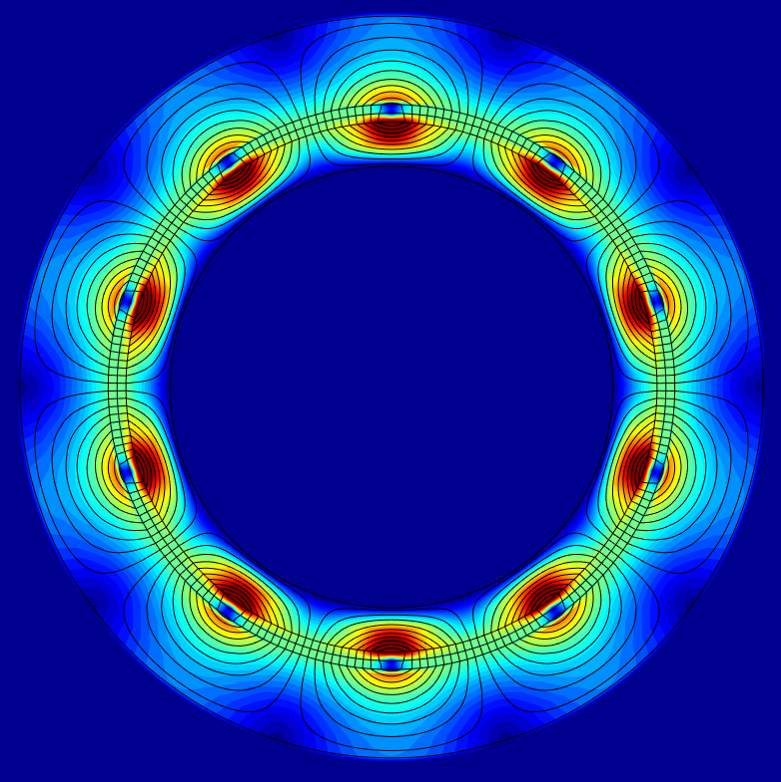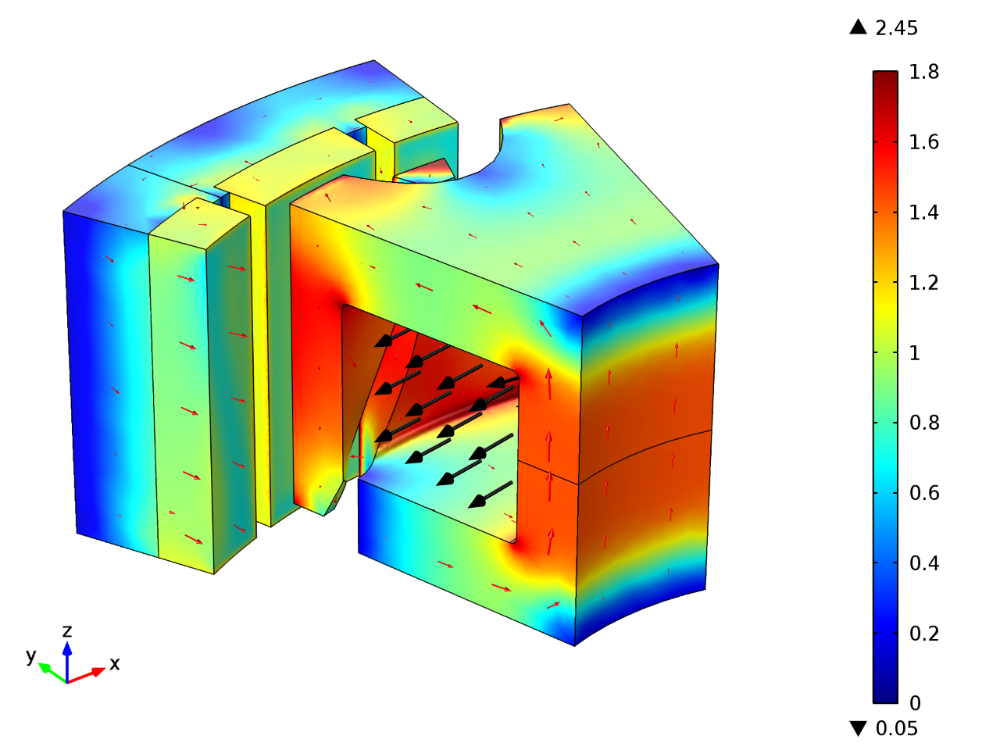Electrical Machines and Propulsion Concepts

The generator of a wind turbine converts the mechanical energy at the shaft into electrical energy that can be fed into the power grid. The calculation and modeling of this core component is therefore indispensable for the overall design of the drive train and of the entire wind turbine.
Current questions in the field of wind power with respect to the drive train refer to general drive concepts such as the connection of the generator via a reduction gearbox or without a gearbox as a direct drive. This includes different generator concepts and generator types, such as the doubly-fed induction machine, the electrically excited synchronous machine and the permanent magnetic excited synchronous machine, which each have advantages and disadvantages in the respective drive concepts.
The Institute for Electrical Energy Conversion (IEW) is engaged in the field of modeling, design and control of electrical drives. In addition to calculations using the Finite Element Method (FEM), analytical models are further developed and refined in order to provide efficient computation tools with different detail resolution from component to system view.

The IEW provides in-depth component knowledge in the area of calculation, design, manufacturing and control of electrical drives, as well as system knowledge about the associated power electronics and about the boundary conditions required in the application as a generator for grid feed such as sinusoidal feed with low distortion factor, frequency stability and controllable active- and reactive power output


